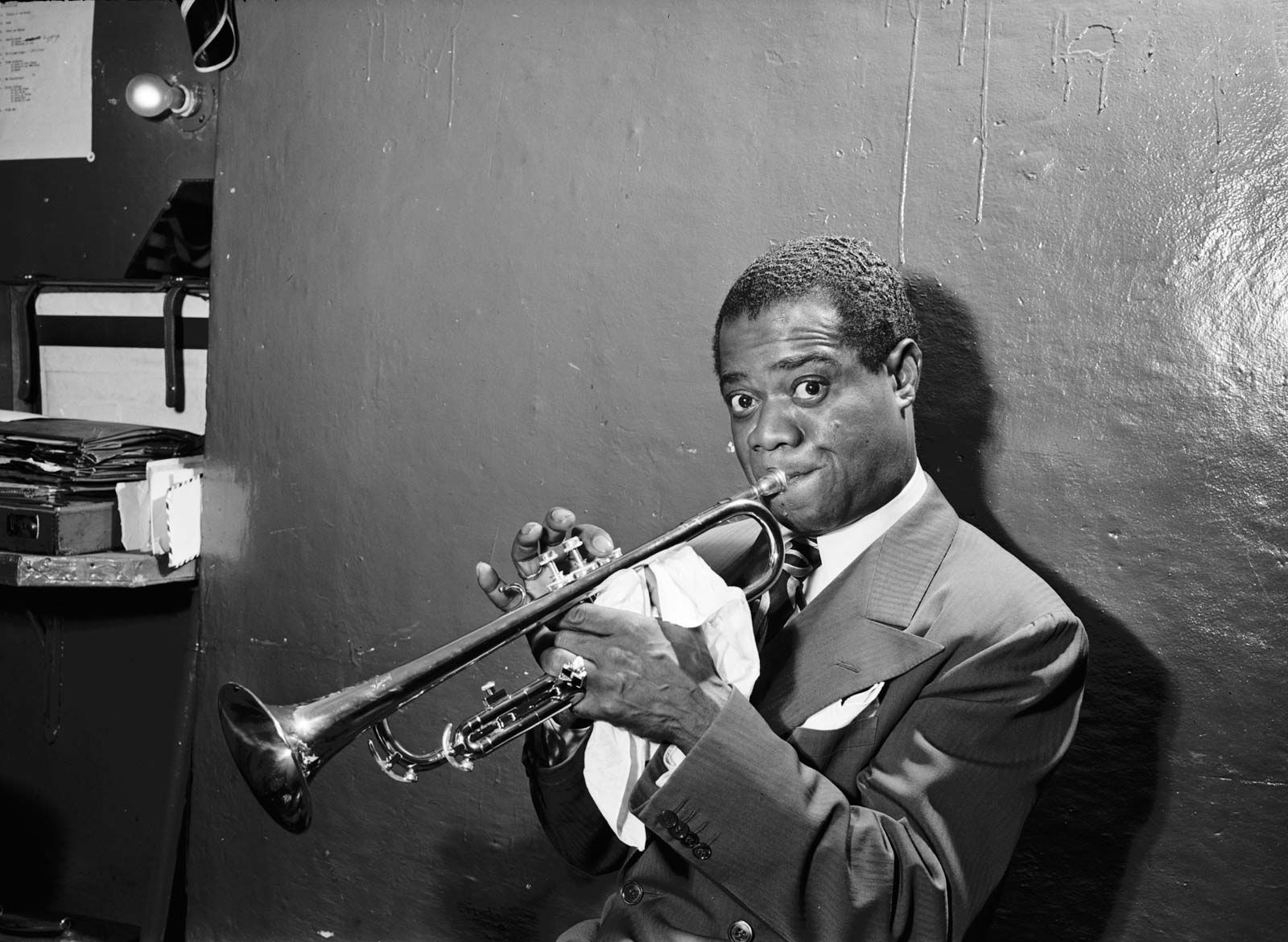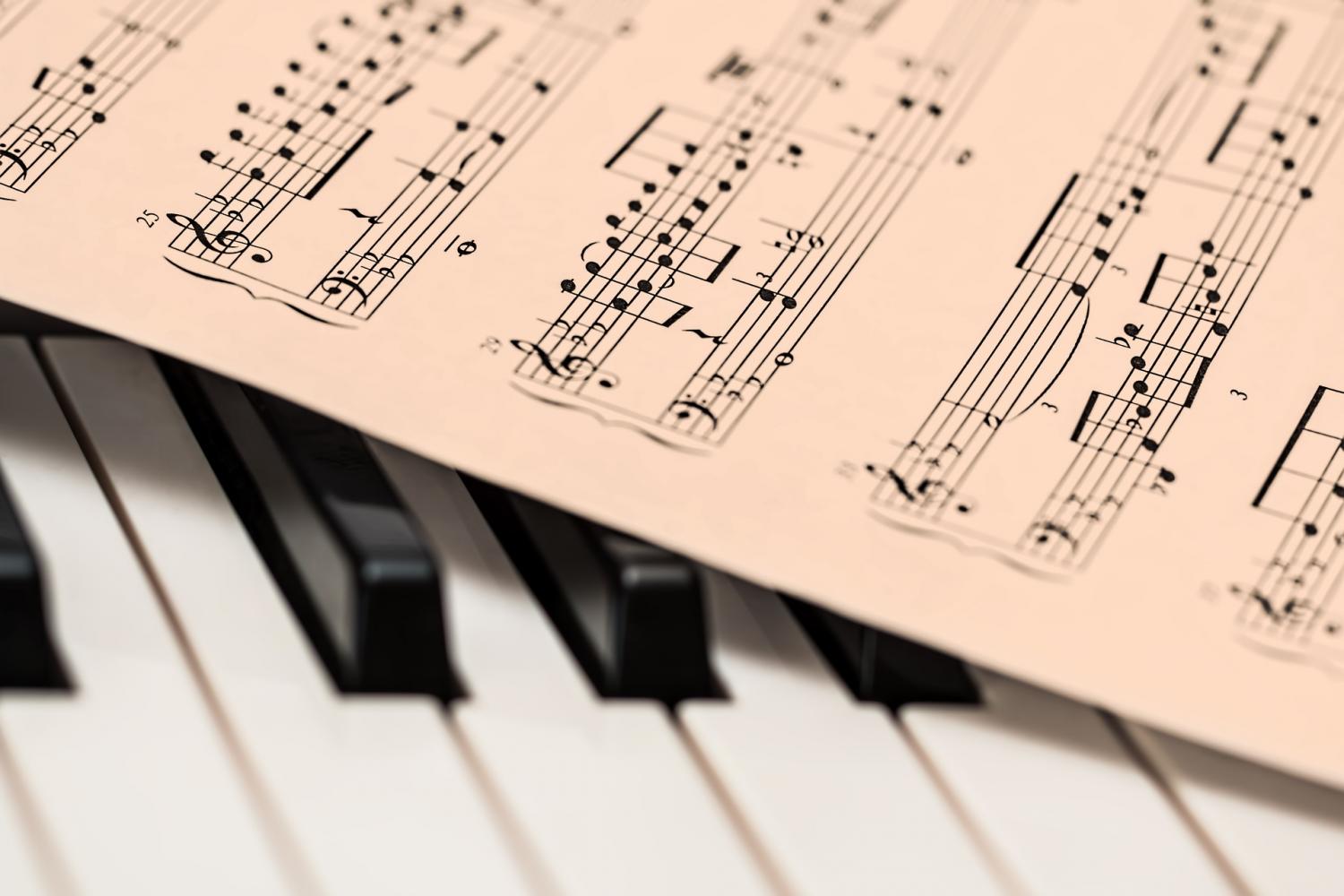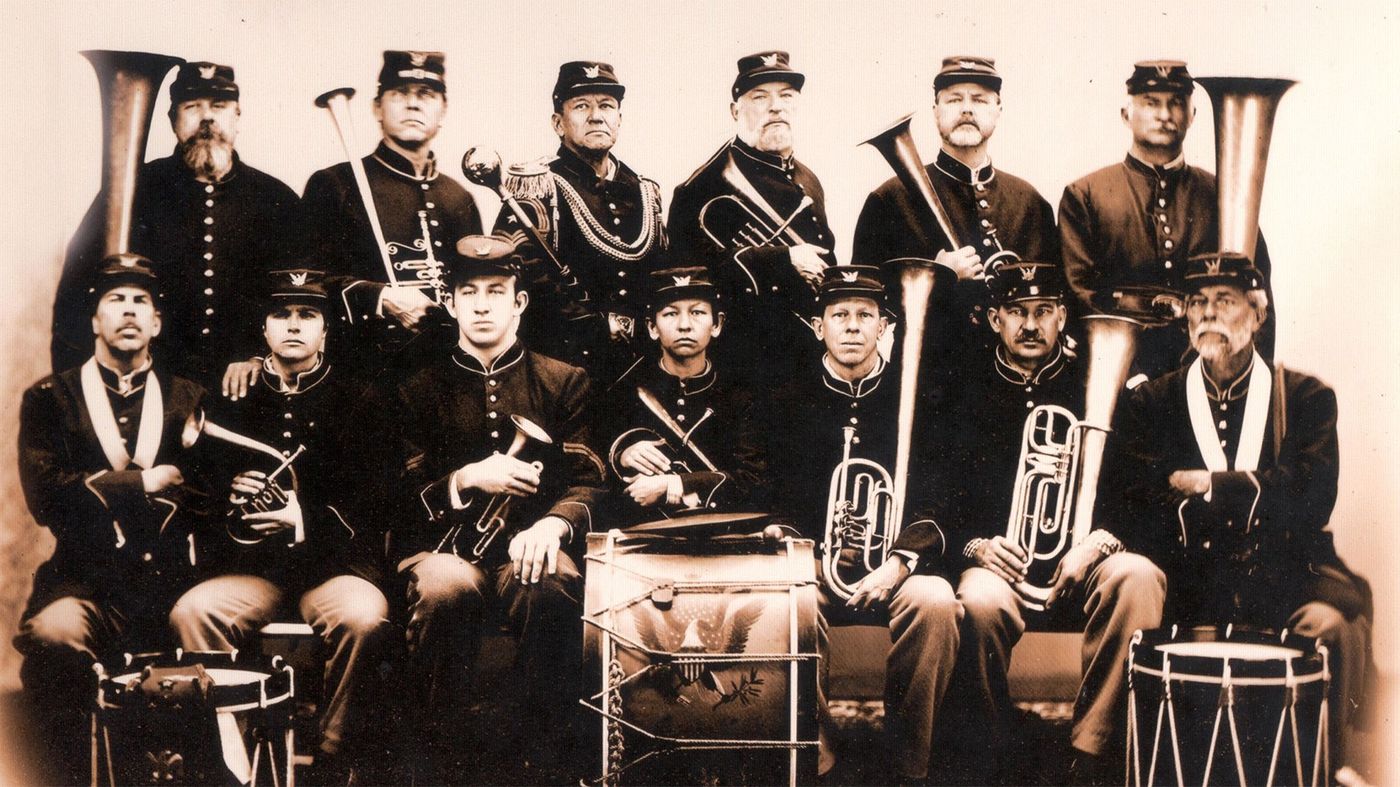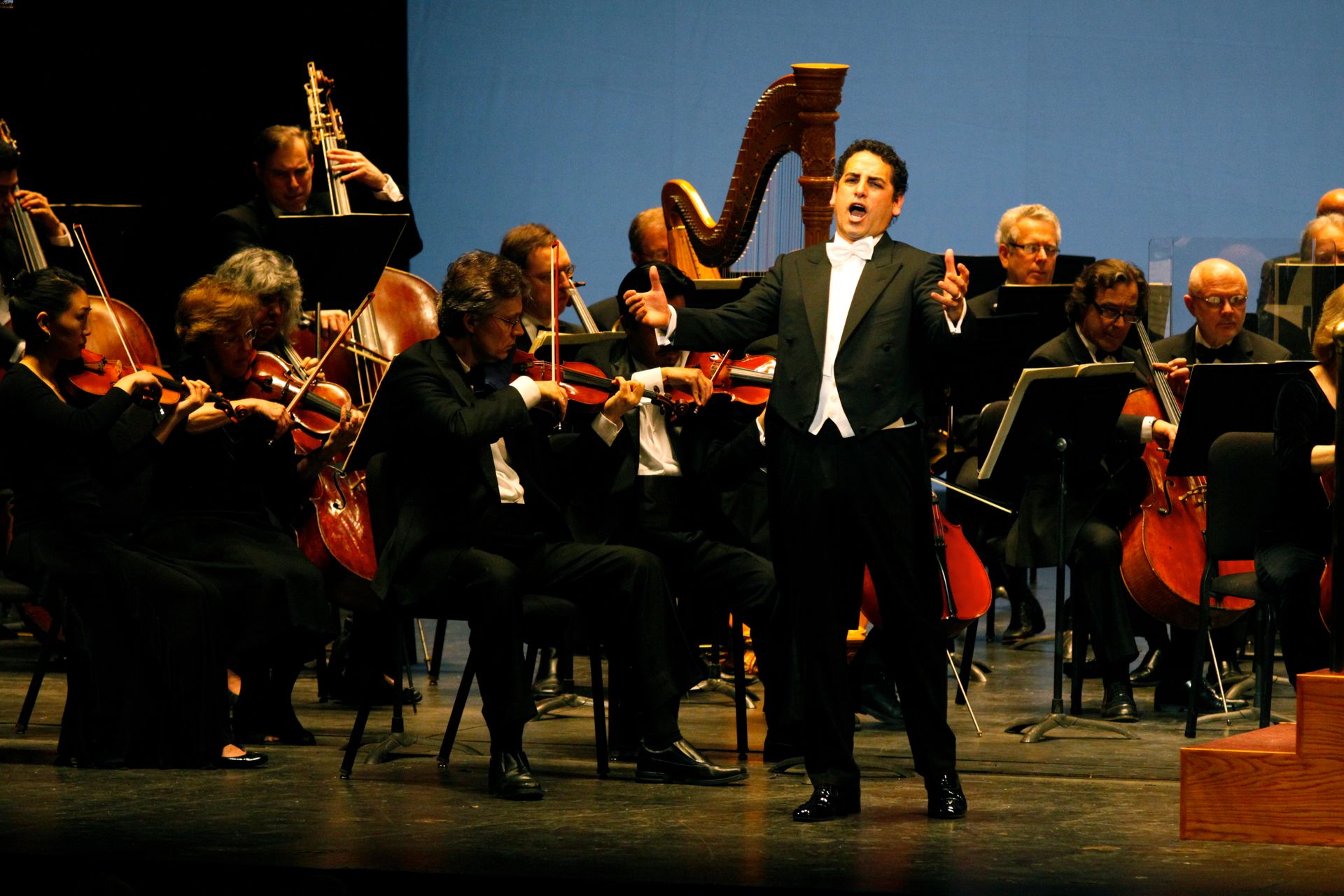Home>Events & Info>Music History>What Is Cajun Music History


Music History
What Is Cajun Music History
Published: December 28, 2023
Discover the rich and vibrant Cajun Music History, exploring its origins, influences, and evolution throughout the years. Uncover the roots and cultural significance of this fascinating genre.
(Many of the links in this article redirect to a specific reviewed product. Your purchase of these products through affiliate links helps to generate commission for AudioLover.com, at no extra cost. Learn more)
Table of Contents
Introduction
Welcome to the captivating world of Cajun music! With its lively rhythms, infectious melodies, and rich cultural heritage, Cajun music has played a significant role in shaping the musical landscape of Louisiana and beyond. Rooted in the vibrant Cajun culture of South Louisiana, this unique genre has a history dating back centuries and continues to captivate audiences to this day.
The term “Cajun” refers to the descendants of French-speaking Acadians who settled in the region after being displaced from Canada in the 18th century. Cajun music, much like the culture it represents, is a fusion of various influences, blending French, African, Native American, and Spanish musical elements into a distinct and vibrant sound.
At its core, Cajun music is deeply connected to the joys, sorrows, and daily experiences of the Cajun people. It serves as a testament to their resilience, passion, and love for life. Whether performed at festive social gatherings, family celebrations, or intimate gatherings, Cajun music evokes a sense of community and nostalgia.
Over the years, Cajun music has gained recognition and popularity worldwide, drawing music lovers from different cultures and backgrounds. This widespread appeal can be attributed to its infectious energy, heartfelt lyrics, and deeply-rooted traditions.
In this article, we will delve into the captivating history of Cajun music, exploring its origins, major influences, notable figures, and the evolution of the genre over time. Join us on this musical journey as we uncover the rich tapestry of Cajun music and its enduring legacy in the world of music.
Origins of Cajun Music
The roots of Cajun music can be traced back to the Acadians, French colonists who settled in Acadia (present-day Nova Scotia, Canada) in the 1600s. Their vibrant folk music, which was heavily influenced by French, Celtic, and Gaelic traditions, served as the foundation for the development of Cajun music.
In 1755, the Acadians were forcibly expelled from their homeland by the British during the Great Expulsion. Many Acadians found refuge in the swamplands of South Louisiana, where they reestablished their communities and preserved their language, traditions, and music.
Isolated from mainstream society, the Acadians forged a distinct cultural identity in Louisiana, blending their French musical heritage with the rhythms and melodies of the local Indigenous and African populations. This fusion of musical influences birthed the unique sound that would become known as Cajun music.
Initially, Cajun music was primarily an oral tradition, passed down through generations by word of mouth. It was performed at informal house gatherings, barn dances, and local celebrations, bringing people together to dance, sing, and forget their daily hardships.
The early instruments used in Cajun music included the fiddle, triangle (or “tit-fer” in Cajun French), and accordion. These instruments provided the enchanting melodies and infectious rhythms that defined the genre.
The lyrics of Cajun songs reflected the struggles, joys, and traditions of the Cajun people. They told stories of love and heartbreak, the resilience of the Acadian heritage, and the daily life of the community, creating a strong sense of cultural identity and unity.
As the Cajun community grew and interacted with neighboring cultures, such as the Creoles and African Americans, further musical influences were incorporated into Cajun music. This intermingling added elements of blues, zydeco, and jazz to the genre, enriching the sound and making it even more dynamic.
Today, the origins of Cajun music are still honored and revered. Musicians and cultural organizations continue to preserve and promote the traditions of the Acadian ancestors, ensuring that the vibrant melodies and captivating rhythms of Cajun music are passed on to future generations.
Early Influences on Cajun Music
The development of Cajun music was greatly influenced by the diverse cultural mosaic of Louisiana. As the Acadians settled in their new homeland, they encountered various musical traditions that left a lasting impact on the evolving Cajun sound.
One of the significant influences on Cajun music was the rhythmic and percussive music of the local Indigenous communities. The Native American tribes in Louisiana had a rich musical heritage, characterized by driving drum rhythms and vocal chants. The Acadians incorporated these rhythmic elements into their own music, adding depth and complexity to their traditional tunes.
The African American population, particularly those of Creole descent, also played a pivotal role in shaping Cajun music. The African musical traditions, with their syncopated rhythms and soulful melodies, brought a new dimension to the evolving Cajun sound. The influence of African American music can be heard in the lively dance tunes and spirited improvisations of Cajun musicians.
Another influential force was the Spanish culture that permeated Louisiana, specifically through the Spanish colony of New Orleans. The Spanish brought with them their own musical traditions, including the guitar and new chord progressions. Cajun musicians adopted these instruments and harmonies, infusing them into their repertoire and expanding the sonic palette of Cajun music.
The French influence, which acted as the foundation of the Acadian musical heritage, continued to play a vital role in the development of Cajun music. The French brought their unique melodies, storytelling traditions, and folk instruments to the Acadian communities. These elements formed the backbone of Cajun music, helping to shape its distinctive sound.
The synergy between these diverse cultural influences created a musical tapestry that made Cajun music so rich and multifaceted. The fusion of French, Indigenous, African, and Spanish musical elements gave birth to a genre that transcended boundaries and resonated with listeners from all walks of life.
While the early influences on Cajun music were important in establishing its foundation, they were just the beginning. As the genre evolved, new styles and genres, such as zydeco and swamp pop, emerged, adding further layers of complexity and diversity to the Cajun music scene.
The early influences on Cajun music laid the groundwork for the vibrant and ever-evolving genre we know today. They created a musical tradition that reflects the history, culture, and spirit of the Cajun people, guaranteeing that Cajun music will continue to be cherished and celebrated for generations to come.
Emergence of Cajun Music as a Distinct Genre
As the Cajun community took root and flourished in South Louisiana, their music began to evolve into a distinct genre with its own unique characteristics. The emergence of Cajun music as a distinct genre can be attributed to several factors.
Firstly, the isolation of the Cajun settlements allowed the music to develop organically, free from the influence of mainstream trends. This isolation created a close-knit community where the traditions and music of the Acadians could thrive and evolve in their own distinct way.
The reliance on oral transmission further contributed to the development of a unique style. Without access to written music, Cajun musicians learned and passed down their songs, melodies, and techniques through aural traditions. This ensured that the music remained authentic and reflective of the Cajun community’s experiences and emotions.
Another key factor in the emergence of Cajun music was the invention and popularization of the accordion. The accordion, with its ability to produce a wide range of expressive sounds, quickly became a cornerstone of Cajun music. Musicians such as Amédé Ardoin and Joe Falcon popularized the use of the accordion in Cajun music, expanding its repertoire and pushing the boundaries of the genre.
Furthermore, Cajun music was an integral part of the community’s social fabric. Dancing and social gatherings provided an outlet for people to come together, celebrate, and forget their daily struggles. The infectious rhythms and lively melodies of Cajun music set the foundation for energetic dances, such as the two-step and waltz, which became synonymous with the genre.
The emergence of recording technology in the early 20th century played a crucial role in spreading and popularizing Cajun music beyond Louisiana. Recordings by pioneering artists like The Breaux Brothers and Cleoma Breaux Falcon, the first successful Cajun recording artists, brought the sounds of Cajun music to a wider audience, cementing its place as a distinct genre.
As Cajun music gained recognition and popularity, it underwent further refinement and innovation. Musicians, such as Iry LeJeune and Dewey Balfa, pushed the boundaries of the genre, infusing elements of swing, country, and blues into their music, creating a more diverse and expansive sound.
Today, Cajun music continues to evolve while staying true to its roots. The emergence of Cajun festivals, such as the Festival International de Louisiane and the Festivals Acadiens et Créoles, further solidify the genre’s status and provide a platform for both traditional and contemporary Cajun musicians to showcase their talent.
The emergence of Cajun music as a distinct genre is a testament to the resilience and creativity of the Cajun people. It serves as a living testament to their culture, history, and unique musical expression.
Major Figures in Cajun Music History
Throughout the rich history of Cajun music, numerous talented individuals have emerged as key figures, shaping and influencing the genre. These musicians have made significant contributions to the evolution and popularization of Cajun music, leaving a lasting impact on its legacy.
Amédé Ardoin, often referred to as the “father of Cajun music,” was a pioneering figure in the genre’s early days. His haunting vocals, expressive accordion playing, and innovative compositions laid the foundation for Cajun music as we know it today. Ardoin’s recordings, despite their scarcity, continue to inspire and influence generations of Cajun musicians.
Dewey Balfa, along with his brothers Will and Rodney, made a profound impact on Cajun music’s revival and preservation. Balfa’s dedication to the traditional Cajun sound and his tireless efforts to showcase Cajun music on the global stage helped to reignite interest in the genre in the 1960s. Balfa’s emotional fiddle playing and heartfelt vocals captured the essence of Cajun music’s spirit and continue to inspire musicians to this day.
Ida Guillory, a trailblazing female musician, broke barriers and became a prominent figure in Cajun music. Known for her powerful vocals and rhythmic accordion playing, Guillory’s performances and recordings helped to elevate the visibility of women in a predominantly male-dominated genre.
Michael Doucet, the founder of the influential band BeauSoleil avec Michael Doucet, has been a driving force in the modern Cajun music scene. Doucet’s virtuosic fiddle playing and innovative approach to blending Cajun music with other genres, such as zydeco and jazz, have expanded the boundaries of the genre and attracted a diverse audience.
Other notable figures in Cajun music history include Nathan Abshire, the “King of Cajun Music,” known for his energetic accordion playing and soulful vocals; Clifton Chenier, a zydeco musician who incorporated elements of Cajun music into his vibrant sound; and Marc Savoy, an accomplished accordion builder, musician, and advocate for Cajun culture.
These major figures, along with many others, have played a critical role in preserving, revitalizing, and popularizing Cajun music. Their dedication and talent have ensured that the genre continues to thrive and resonate with audiences worldwide.
Today, a new generation of Cajun musicians, such as Cedric Watson, the Lost Bayou Ramblers, and Feufollet, are carrying the torch, blending tradition with innovation and pushing the boundaries of Cajun music further. As the genre evolves, these emerging figures ensure that the vibrant spirit and cultural legacy of Cajun music live on.
Evolution of Cajun Music over Time
Cajun music has undergone a fascinating evolution throughout its history, adapting and evolving with the changing times while staying true to its roots. This evolution can be observed through different eras and musical trends that have shaped the genre.
In the early days, Cajun music was primarily performed in small, intimate settings such as house parties and community gatherings. The music had a raw, unpolished quality, with musicians relying on fiddles, accordions, and triangles to create lively rhythms and spirited melodies.
As Cajun music gained popularity beyond Louisiana in the mid-20th century, the genre began to incorporate elements from other musical styles. The influence of Western swing, country, and the emerging genre of rock and roll became apparent in Cajun music, with artists like Jimmy C. Newman and D.L. Menard infusing their songs with these new sounds.
The 1960s witnessed a notable resurgence of interest in traditional Cajun music. Dewey Balfa and other musicians formed groups to revive and preserve the authentic Cajun sound. This movement led to the establishment of festivals dedicated to Cajun music, such as the Festivals Acadiens et Créoles, which further solidified the genre’s revival.
In the 1980s and 1990s, Cajun music experienced a renaissance with the success of bands like BeauSoleil and the resurgence of zydeco music led by artists like Buckwheat Zydeco. Both genres gained wider recognition on the national and international stage, sparking a renewed interest in Cajun and Creole music.
During this period, Cajun music blended with other genres, such as jazz, rock, and pop, resulting in a more diverse and experimental sound. Musicians like Zachary Richard and Wayne Toups incorporated these influences while maintaining a strong connection to traditional Cajun roots.
The modern era of Cajun music continues to embrace innovation and fresh perspectives. Younger generations of Cajun musicians are pushing the boundaries by incorporating elements of hip-hop, reggae, and other contemporary genres into their music, while still maintaining a deep respect for the traditional Cajun sound.
Technological advancements have also played a role in the evolution of Cajun music. The emergence of digital recording and the internet have provided easier access for musicians to share their music with a wider audience, contributing to the genre’s ongoing growth and global reach.
Today, Cajun music remains a vibrant and ever-evolving genre, blending tradition with modern influences. It continues to captivate audiences with its infectious rhythms, heartfelt lyrics, and the unmistakable spirit of the Cajun people. As the genre continues to evolve, it remains rooted in the rich heritage and cultural legacy that have made Cajun music a truly timeless and cherished art form.
Impact and Influence of Cajun Music
Cajun music, with its distinctive sound and cultural significance, has had a profound impact and lasting influence on various aspects of society. From music genres to culinary traditions, Cajun music continues to shape and inspire a wide range of artistic and cultural expressions.
One of the most significant contributions of Cajun music is its influence on other musical genres. Zydeco, a genre closely related to Cajun music, evolved from the same cultural roots and shares many stylistic elements. The infectious rhythms and accordion-driven melodies of Cajun music found their way into the vibrant sounds of zydeco, creating a unique blend that continues to energize audiences on dance floors around the world.
Cajun music’s impact is not limited to Louisiana. Its influence reverberates across the globe, with Cajun musicians and festivals attracting international attention. Cajun music festivals like Festival International de Louisiane and the Festivals Acadiens et Créoles have become major cultural events, drawing visitors from all over the world who come to experience the vibrant energy and rich heritage of Cajun music.
Beyond its musical influence, Cajun music has had a profound impact on cultural identity and revitalization. It serves as a powerful symbol of the Cajun community’s resilience and pride in their unique heritage. Through their music, Cajun musicians have preserved and celebrated the traditions, language, and stories of the Acadian ancestors, instilling a sense of cultural pride and unity among Cajun people.
Cajun music also has a significant impact on the tourism industry in Louisiana. Visitors flock to the region to experience the vibrant sounds of Cajun music, dine on delicious Creole and Cajun cuisine, and immerse themselves in the cultural fabric of the Cajun community. This steady stream of tourism contributes to the economic growth of Cajun regions, supporting local businesses and preserving the cultural heritage of the area.
Furthermore, Cajun music has influenced other art forms, such as literature and visual arts. Writers have drawn inspiration from the stories and emotions conveyed through Cajun music, incorporating its themes and melodies into their works. Similarly, visual artists have captured the spirit of Cajun music through paintings, sculptures, and photography, immortalizing the essence of this vibrant musical tradition.
Cajun music’s impact extends into the realm of culinary arts as well. The joyous and celebratory nature of Cajun music is often accompanied by delectable dishes and lively culinary traditions. The music has inspired a rich culinary heritage, with Cajun food becoming synonymous with flavor, spice, and communal dining experiences. From gumbo and jambalaya to crawfish boils, Cajun music has influenced the cherished culinary traditions of Louisiana.
In summary, the impact and influence of Cajun music are far-reaching and diverse. It has left an indelible mark on music genres, cultural identity, tourism, literature, visual arts, and even culinary traditions. Cajun music continues to resonate with audiences worldwide, bridging cultures and transcending boundaries, as it celebrates the resilience, joy, and sense of community that define the Cajun people and their vibrant musical heritage.
Conclusion
Cajun music, with its infectious rhythms, heartfelt lyrics, and diverse cultural influences, has carved a special place in the annals of music history. From its humble beginnings rooted in the Acadian settlements of South Louisiana, Cajun music has evolved into a dynamic and influential genre that captivates audiences around the world.
Throughout its journey, Cajun music has showcased the resilience, pride, and cultural heritage of the Cajun people. It has transcended boundaries, blending elements of French, Indigenous, African, and Spanish music to create a unique sound that resonates with listeners from all walks of life.
The impact of Cajun music extends beyond the realm of music itself. It has shaped other genres like zydeco, inspired artistic expressions in literature and visual arts, and enriched the culinary traditions of Louisiana. It has become a symbol of cultural identity and revitalization, uniting the Cajun community and instilling a sense of pride in their heritage.
Cajun music has also played a significant role in the growth of tourism in Louisiana. Festivals dedicated to Cajun music have become major cultural events, drawing visitors from far and wide to experience the vibrant energy and rich traditions of the genre.
As Cajun music continues to evolve alongside the changing times, it remains firmly grounded in its roots. Both traditional and contemporary Cajun musicians carry the torch, blending innovation with a deep respect for the heritage that has shaped the genre.
In conclusion, the captivating history, cultural significance, and enduring influence of Cajun music make it a treasure worth cherishing. It serves as a testament to the resilience, creativity, and unity of the Cajun community. Whether you’re tapping your foot to the lively accordion melodies or joining in on a spirited dance, Cajun music promises an enchanting journey into the heart and soul of Louisiana’s rich musical heritage.











